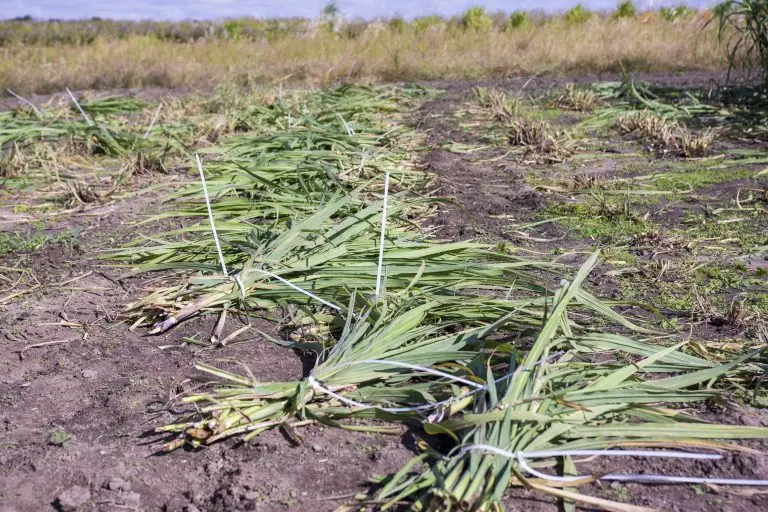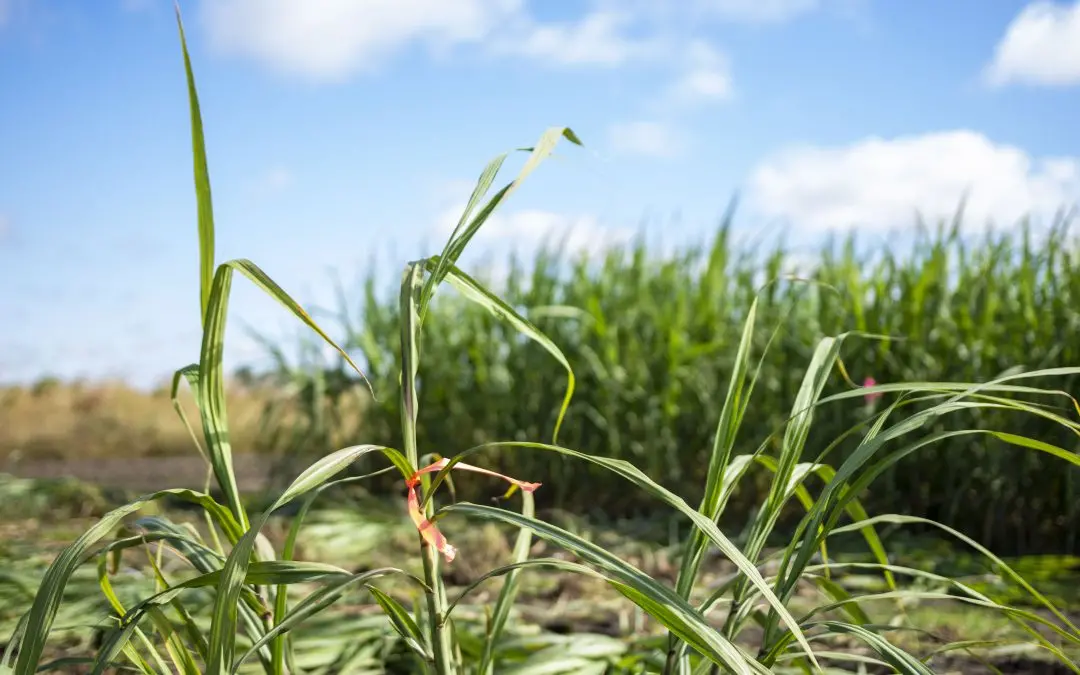From southeastern Florida to northern Mississippi to the Midwestern Corn Belt, CABBI scientists have struck sustainable oil with sugarcane. But the crop’s potential value to the renewable energy sector earns this particular variety a more appropriate designation: oilcane.
A groundbreaking endeavor uniting CABBI’s Feedstock Production and Conversion themes is coming to fruition with the fall 2020 harvest. By analyzing a sugarcane variety specifically designed to divert natural sugars for oil production, researchers can provide sustainable, plant-based fossil fuel alternatives.
The initial seeds of this project were sown as a result of CABBI Feedstock Production Investigators John Shanklin and Fredy Altpeter’s work on the PETROSS (Plants Engineered to Replace Oil in Sugarcane and Sweet Sorghum) DOE ARPA-E project. Their teams at Brookhaven National Laboratory (BNL) and University of Florida, respectively, manipulated lines of sugarcane to accumulate elevated lipid content compared to their wild-type counterpart.

In addition to wild-type sugarcane, which was analyzed as a control group, two genetically engineered lines were used in this project: the first is higher in oil content and yields lower levels of biomass due to resource diversion for oil production; the second produces moderate oil levels but exhibits biomass production similar to the wild-type.
After careful cultivation in the lab and in the greenhouse, Altpeter’s team prepared the plants for field trials in Florida and sent source material to two additional CABBI test sites: Mississippi State University and the Illinois Energy Farm. At Mississippi State, lab groups led by Nancy Reichert and Brian Baldwin used the source material provided by Altpeter to respectively propagate and cultivate the sugarcane lines in field trials.
After arriving in Urbana, Ill., the propagated stem segments spent time maturing in the greenhouses before being transferred to the quarter-acre field site at the Illinois Energy Farm — unusual for the U of I, as the Midwest’s harsh northern conditions and abbreviated growing season pose significant challenges for growing sugarcane.



A team of CABBI field technicians, graduate students and postdocs harvested a substantial crop of oilcane at the Illinois Energy Farm in early October. The harvested material did not have far to travel before the next phase of processing and conversion. A juicer located on the Illinois Energy Farm plots crushes and compresses the harvested biomass to extract a dark, juice-like mixture of the plant’s natural sugars and oils.
Fresh from the juicer, the oil-sugar mixture is delivered to Illinois’ own Integrated Bioprocessing Research Laboratory (IBRL), where CABBI Conversion scientists and IBRL staff, led by CABBI Deputy Director of Science and Technology Vijay Singh, begin the treatment and processing phase. Two product streams are generated at IBRL: first, a rotating centrifuge is used to isolate the oil, which can be directly converted to biodiesel; second, the remaining sugar is fermented to produce bioethanol.
A potential third product stream relates to the bagasse; this is the dry plant material left after the sugarcane goes through the juicer. Should the biomass contain residual oil after being crushed, these can be recovered after proper pretreatment at IBRL.
“This project embodies CABBI’s overarching mission: to use the “plants as factories” paradigm to grow innovative varieties of biofuel crops and convert the material into products that are not only economically feasible, but also environmentally sustainable. We are so pleased to integrate CABBI field operations with processing operations at IBRL in this way, and to continue innovating toward efficient and long-lasting solutions.”
Vijay Singh, IBRL Director and CABBI Deputy Director



Demonstrating the approach by which CABBI discoveries will be tested on a large scale to find solutions that can revolutionize biofuel production, this year-long pilot project is grounded in collaboration between CABBI’s multidisciplinary themes and partner institutions. For example: in addition to the physical products derived from test sites at Mississippi State University, the University of Florida, and the University of Illinois Urbana-Champaign, data from all three sites will be used to explore and understand the impact of growing conditions on the crop’s sugar and oil content by enlisting analytical expertise from Ed Cahoon at University of Nebraska and John Shanklin at BNL.
From cultivating, harvesting, and analyzing the biomass to deriving viable bioproducts, this project’s full life cycle would not be possible without close collaboration across universities, facilities, and state lines.
“Achieving our sustainability goals requires big-picture thinking and the kind of bold creativity that pushes on the bounds of what we believe to be possible. My visits to the Energy Farm and SoyFACE and the IBRL gave me a glimpse of what a brighter, sustainable future can look like — and it all begins with thoughtful collaboration, interdisciplinary research, and, fittingly, the fall harvest,” said Susan Martinis, Vice Chancellor for Research and Innovation at the University of Illinois Urbana-Champaign.
In addition to actively engaging parts of CABBI’s Feedstock Production and Conversion themes at present, the project provides opportunities in the near future to develop valuable bioproducts by deploying newly engineered yeasts and engage the Sustainability theme on how high-oil content crops impact nutrient cycling in the fields.

— Story and photos by CABBI Communications Specialist Jenna Kurtzweil
